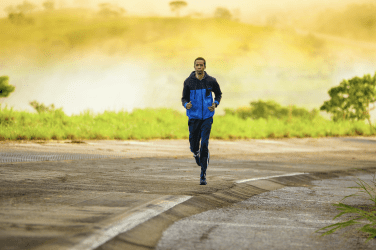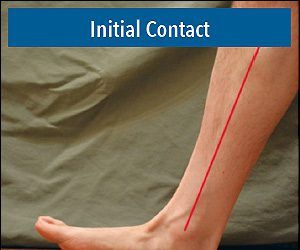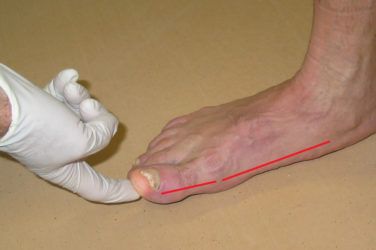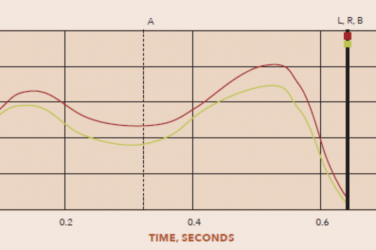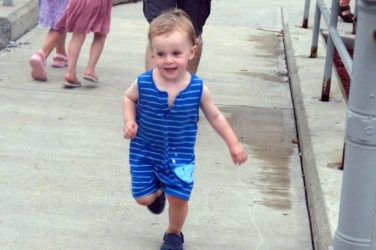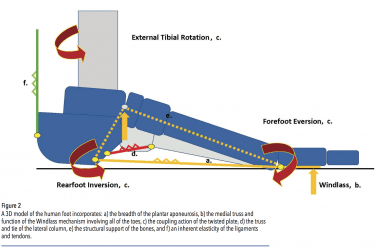Do current theories of biomechanics adequately describe the functioning foot and lower limb?
Recently I wrote an article titled “The Effectiveness of Foot Orthotics” to present some of the scientific evidence supporting the use of foot orthotics in preventing and healing injuries of the lower limb. I believe in the value of orthotics, as I have repeatedly seen their therapeutic advantage in helping patients relieve pain, walk comfortably, recover from injury, and prevent recurrence of symptoms. For that article, I used the Internet to conduct a literature review to support my belief. The search yielded a collection of more than two dozen studies showing direct and clear benefits of foot orthotics in treating plantar fasciitis, rheumatoid arthritis, posterior tibial tendinitis, painful feet, and diabetes-related foot problems.
However, in doing the research I noticed that there were also many other papers that did not conclusively demonstrate the benefit of orthotics. As some of the studies and my own experience indicate, orthotics do work, but their efficacy is not universal. Clearly, the anatomy of the foot and the kinetics of ambulation are complicated, and we are dealing with the human body and its almost infinite individual variations. Yet the question arises: Is there poor consistency in the results because of the sheer complexity of the dynamic human foot, or are our current models too limited?
As I completed the review, I came across a recently published book, Biomechanics of Sport Shoes, by Benno Nigg, Dr.sc.nat., Dr.h.c. mult. Nigg, who is co-director of the Human Performance Laboratory and a biomechanics professor at the University of Calgary, Alberta, Canada, has spent more than 40 years researching loading and performance of human locomotion. He has published a great number of research papers and findings on sport shoes, inserts, orthotics, and sport surfaces. In the 1970s he, and many foot and ankle specialists, were focused on researching the effects of excessive impact and pronation and their relationship to running-specific injuries. However, little supporting experimental evidence was found.
Some of Nigg’s more interesting findings from the research of that era included a study on the external impact forces for 33 runners (n=33). They were given a set of regular over-the-counter running shoes and a set of running shoes specially constructed to provide “excellent cushioning” for heel-toe running. Surprisingly, the cushioned shoes showed higher external impact forces (Figure 1). A second experiment quantified impact forces for four different running speeds across three different types of sole material. The vertical impact peaks remained at the same level for the different sole materials but changed at different running speeds (Figure 2). The data indicated that speed, an external factor affecting kinetics, changes impact force but cushioning does not. It was becoming apparent that the moving skeleton was not a simple mass whose vibrations could be dampened through cushioning. The human locomotor system was somehow attenuating the effects of impact.
Beginning in the late 1980s, a new understanding emerged that excessive impact forces and pronation are not major factors in the development of sports-related injuries (Figures 3 and 4). In fact, other studies showed that the best predictors of movement-related injuries are exposure, time, and previous injuries. A better model needed to be developed.
A New Paradigm—Muscle Tuning
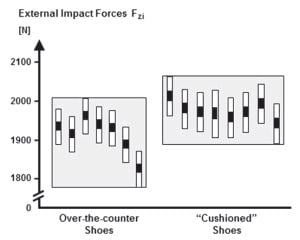 Figure 1: Cushioned shoes show higher external impact forces.
Figure 1: Cushioned shoes show higher external impact forces.
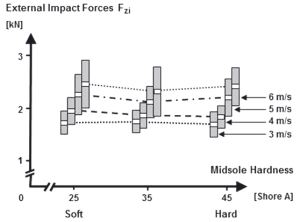 Figure 2: Speed changes impact force. Cushioning does not.
Figure 2: Speed changes impact force. Cushioning does not.
The body in motion does respond to cushioning, but experiments during running indicate that soft-tissue vibrations are short and heavily damped independent of the shoe/surface combination. So how was the body responding to impact and vibration? Observations led to further investigation of the relationship between vibrations, frequency, and muscle activation. It was observed that different soft-tissue compartments change their natural frequency and damping characteristics through changed muscle activation to avoid resonance. These changes in muscle activity are called muscle-tuning effects.
In one of several experiments discussed in Nigg’s book, subjects (n=11) lay on a pendulum bed positioned in front of a wall with a force plate mounted on the wall. During each contact, the “wall force” was quantified, and myoelectric signals were measured for four muscles. Subjects wore two pairs of shoes, each pair with different cushioning properties, and electromyography (EMG) signals were analyzed before and after contact (i.e. pre-activation and post-activation). In nine of 11 cases, the reduction of the vibration amplitudes was the result of muscle activity. Further experiments have refined the understanding of muscle activation in response to impact force.
The muscle-tuning paradigm can be summarized as follows: Impact force provides a signal that is sensed by the central nervous system, which in turn responds by adjusting and activating corresponding muscle groups. Tuning occurs to minimize soft-tissue vibrations. These effects are subject specific and depend on the characteristics of soft-tissue compartments. It appears that the locomotor system minimizes the vibration of soft-tissue compartments automatically. As designers of orthoses, prostheses, shoes, and other devices, we should seek to enhance this naturally occurring phenomenon.
What Is the Real Effect of Orthotics?
 Figure 3: Higher loading rates do not increase injury frequency.
Figure 3: Higher loading rates do not increase injury frequency.
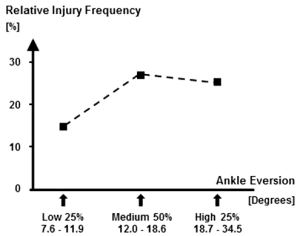 Figure 4: Ankle eversion does not increase injury frequency.
Figure 4: Ankle eversion does not increase injury frequency.
If muscle tuning is a significant component in body motion, how does it relate to traditional biomechanics theories? To answer the question, Nigg provides a thorough review of functional biomechanics. Movement coupling at the ankle is defined as the transfer of movement between the calcaneus and the tibia. In biomechanics research, this link between tibial rotation and calcaneal inversion/eversion is often used as the basis to determine the effect of orthotics and shoes.
Over the course of several studies it becomes clear that when using orthotics, changes in foot eversion and tibial rotation are inconsistent, subject specific, and typically small (in the order of 2 degrees).
A curious conundrum emerges: Orthotics do work, and yet the skeleton seems to minimize their direct orthopedic effect. This raises an interesting question. If, for example, firm medial-arch support does not reliably limit foot eversion, how valid is the mainstream biomechanics curriculum such as Root theory and the tissue-stress approach?
The issue is highlighted in a study of 21 healthy runners who ran with a variety of inserts over several weeks. While the kinematic changes were statistically significant, they were also small, typically about 2 degrees. More importantly, in most cases the inserts/orthotics did increase muscle activity. This was further determined by a group of 15 subjects who were tested wearing a variety of medially and laterally posted orthotics. The study measured, among other variables, the path of the center of pressure (COP) during heel-toe running. Once again, the results were not consistent, and in many cases, they were the opposite of what was expected! Medial posting does not reliably produce a lateral shift in the path of COP, and vice versa.
The Preferred Movement Path
Nigg concluded that in the normal, healthy population, the goal of aligning the skeleton is not achieved through insert interventions; the potential effects for inserts and orthotics are in the possibility to change muscle activity. He states that the kinematics of the lower limb change little in response to changing the shoe and/or the orthotic conditions. Furthermore, the correlation between foot “alignment” and the frequency of injuries is small. From this he developed another paradigm called the preferred movement path (PMP).
The PMP is a trajectory dictated in part by mechanics (e.g. the shape of the articular surfaces, ligaments, tendons, and muscles crossings) and motor control (i.e. programmed activation patterns of muscles for a given movement). It is assumed that the movement in each joint is influenced by the goal to maintain the PMP or the “minimal resistance path.” This new concept explains why inserts have little effect on skeletal alignment, and why orthotics use usually results in an increase in muscle activity. It seems that the leg is “fighting” the kinematic changes caused by the devices, and the muscles are compensating for the induced changes.
Finally, another surprising study involved soldiers (n=107) who were given various insoles for use in their military boots and asked to rate them for “comfort.” The results indicate that wearing inserts does improve comfort ratings, that comfort is subject specific, and that different insert constructions are needed for the general market. Later on, the soldiers used their most comfortable insert during daily activities for a period of four months. Their injury frequencies were compared to a control group that did not use any inserts. The results showed that lower-limb injuries and problems were clearly lower for the insert group, convincingly demonstrating the value of the insoles.
It appears that our current models of lower-limb biomechanics are incomplete. Far from simply realigning the skeleton and altering kinetics, orthotics also affect muscle function as the body works along preferred movement paths. In addition, the role of “comfort” is poorly understood but seems to play a significant factor that needs to be more fully explored. Nigg has done a true service to our profession through his meticulous work, and Biomechanics of Sport Shoes is a fascinating read. It has helped me to understand things that I intuitively knew to be correct, while simultaneously forcing me to question what I thought I knew. Although the book mainly focuses on the dynamic foot in healthy athletes, the new paradigms greatly expand our general understanding of the foot and ankle.














